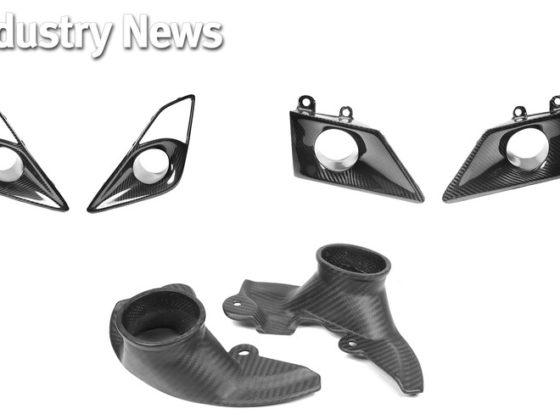,
The first thing Corsa does when developing an exhaust system for a car is to drive it and record its exhaust noise and run it through frequency analyzing equipment and proprietary software. They then repeat the entire process with straight pipes, to record what Corsa refers to as “the raw sound of the engine.” Their acoustic engineers then design an exhaust system that increases performance and sound without that dreadful drone.
A simplified explanation of Corsa’s proprietary RSC technology is that it utilizes “noise cancellation” in the mufflers. Near the entrance of the muffler are several 360° slits that lead to “pulse channels”—acoustic waveguides—within the body of the muffler. Exhaust gasses pass straight through the muffler, but sound waves travel into the slits, where they “bounce around” inside the maze-like structures until they come back out into the exhaust stream. These chambers are tuned using length and width to precisely reflect the sound waves back exactly 180° out of phase with the sound waves that cause drone. The result is a straight-through muffler that is quiet while cruising, because the frequencies that cause droning are cancelled out.

Corsa sent us their complete system for Project Mustang 5.0 to evaluate. This included both their axle-back “Xtreme” mufflers and their crossover “X” pipe. Exhaust systems are extremely difficult to install if all you have is jack stands. Conversely, exhaust systems are basically just Tinker Toys if you can put the car up on a lift. Since I don’t have a lift, I asked my friend Larry Casey of Casey Design Products to help me with installing the exhaust.
 Project Mustang going up on the lift at Casey Design. Note how “minimalistic” the previous
Project Mustang going up on the lift at Casey Design. Note how “minimalistic” the previous After getting the car on the lift and letting the exhaust cool off, we got to work. The first thing Larry installed was the new crossover pipe. Below is a picture of the stock crossover pipe, which is of an “H” configuration.

Removal of the stock crossover pipe proved to be a bit of a pain in the butt, since bottoming out on a particularly rough speed bump last summer had actually bent both of the clamps securing the downpipes to the crossover pipe. Fortunately, Corsa provides new clamps in their kit. Corsa’s “XOver” pipe comes in two pieces for ease of packaging and on-car adjustment reasons. Here it is temporarily assembled, next to the stock H-pipe that Larry removed.
 You can see that the Corsa XOver pipe is one continuous diameter, unlike the stock crossover pipe that necks down to several smaller diameters. X-pipes generally do a better job of scavenging at high RPMs due to the less angular path that equalizing exhaust pulses have to travel; the two streams are better merged together. X-pipes are known for a more exotic exhaust note.
You can see that the Corsa XOver pipe is one continuous diameter, unlike the stock crossover pipe that necks down to several smaller diameters. X-pipes generally do a better job of scavenging at high RPMs due to the less angular path that equalizing exhaust pulses have to travel; the two streams are better merged together. X-pipes are known for a more exotic exhaust note.


